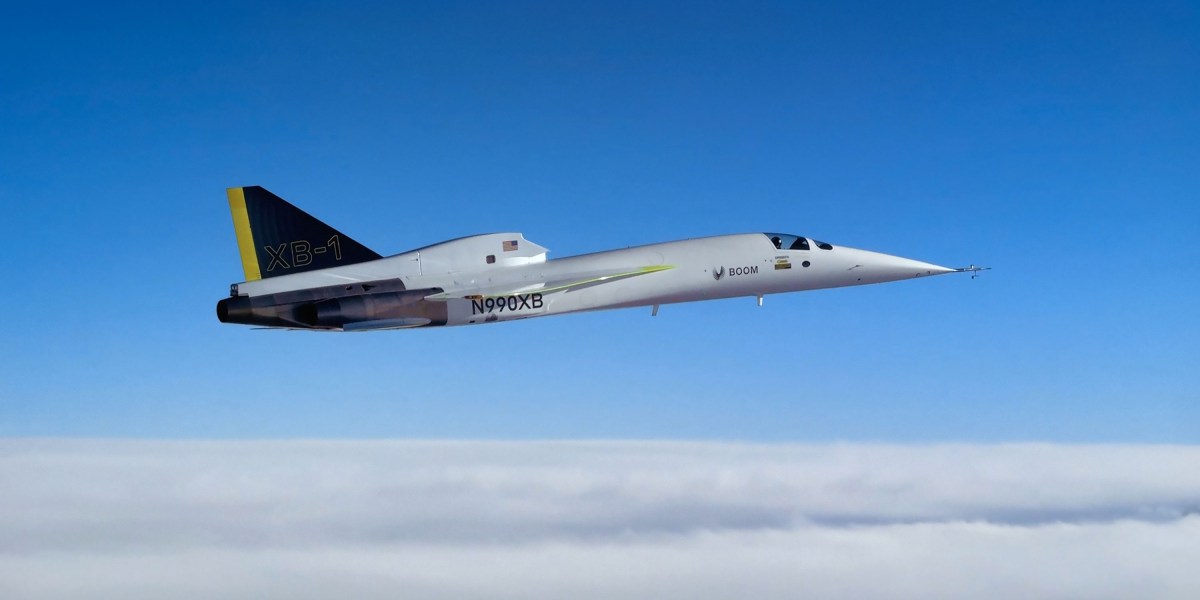Boom plans to start commercial operation with a scaled-up version of the XB-1, a 65-passenger jet called Overture, before the end of the decade, and it has already sold dozens of planes to customers including United Airlines and American Airlines. But as the company inches toward that goal, experts warn that such efforts will come with a hefty climate price tag.
Supersonic planes will burn significantly more fuel than current aircraft, resulting in higher emissions of carbon dioxide, which fuels climate change. Supersonic jets also fly higher than current commercial planes do, introducing atmospheric effects that may warm the planet further.
In response to questions from MIT Technology Review, Boom pointed to alternative fuels as a solution, but those remain in limited supply—and they could have limited use in cutting emissions in supersonic aircraft. Aviation is a significant and growing contributor to human-caused climate change, and supersonic technologies could grow the sector’s pollution, rather than make progress toward shrinking it.
XB-1 follows a long history of global supersonic flight. Humans first broke the sound barrier in 1947, when Chuck Yeager hit 700 miles per hour in a research aircraft (the speed of sound at that flight’s altitude is 660 miles per hour). Just over two decades later, in 1969, the first supersonic commercial airliner, the Concorde, took its first flight. That aircraft regularly traveled at supersonic speeds until the last one was decommissioned in 2003.
Among other issues (like the nuisance of sonic booms), one of the major downfalls of the Concorde was its high operating cost, due in part to the huge amounts of fuel it required to reach top speeds. Experts say today’s supersonic jets will face similar challenges.
Flying close to the speed of sound changes the aerodynamics required of an aircraft, says Raymond Speth, associate director of the MIT Laboratory for Aviation and the Environment. “All the things you have to do to fly at supersonic speed,” he says, “they reduce your efficiency … There’s a reason we have this sweet spot where airplanes fly today, around Mach 0.8 or so.”
Boom estimates that one of its full-sized Overture jets will burn two to three times as much fuel per passenger as a subsonic plane’s first-class cabin. The company chose this comparison because its aircraft is “designed to deliver an enhanced, productive cabin experience,” similar to what’s available in first- and business-class cabins on today’s aircraft.
That baseline, however, isn’t representative of the average traveler today. Compared to standard economy-class travel, first-class cabins tend to have larger seats with more space between them. Because there are fewer seats, more fuel is required per passenger, and therefore more emissions are produced for each person.




